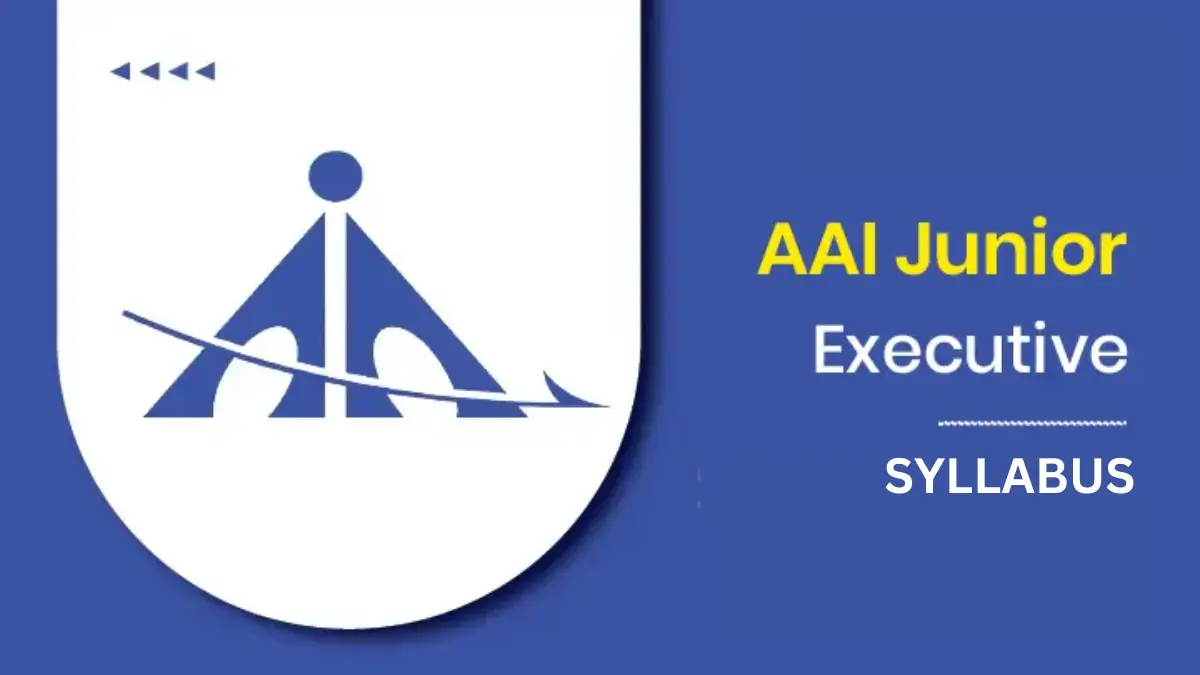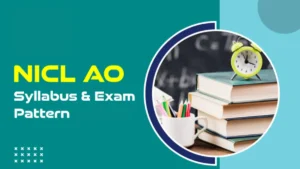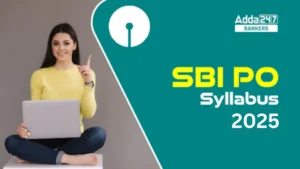The Airports Authority of India (AAI) will conduct the AAI Junior Executive Exam 2025 on 6 May 2025 for the Fire Services, Human Resources, and Official Language posts. To succeed in this competitive exam, candidates must thoroughly understand the latest syllabus and exam pattern. A clear grasp of subject-wise topics and the exam structure will enable aspirants to develop an effective preparation strategy. This article provides a detailed overview of the syllabus and pattern to help candidates streamline their exam preparation.
AAI Junior Executive Syllabus 2025
The AAI Junior Executive Syllabus 2025 and Exam Pattern are crucial for effective exam preparation. Candidates aiming for the Junior Executive post must have a strong command of the AAI JE Syllabus 2025. The online examination will include multiple sections and subjects, which we have outlined in this article. Stay ahead in your preparation by bookmarking this page and following the structured AAI Junior Executive Syllabus 2025.
AAI Junior Executive Exam Pattern 2025
The AAI Junior Executive Exam will follow the specified pattern, consisting of 120 questions carrying a total of 120 marks. Candidates will have a time limit of 2/3 hours to complete the exam. Each question is worth 1 mark, and there will be no negative marking. The detailed AAI Junior Executive Exam Pattern 2025 is presented in the table below.
For Junior Executive (Fire Services)
| AAI JE Exam Pattern 2025 (Fire Services) | ||||
|---|---|---|---|---|
| Part | Subject | No. of Qs. | Max. Marks | Duration |
| Part A | General Knowledge, General Intelligence, General Aptitude, English etc. | 60 | 60 | 120 minutes |
| Part B | Professional Knowledge | 60 | 60 | |
| Total | 120 | 120 | 2 Hours | |
For Junior Executive (Human Resources/ Official Language)
| AAI JE Exam Pattern 2025 (Human Resources/Official Language) | ||||
|---|---|---|---|---|
| Part | Subject | No. of Qs. | Max. Marks | Duration |
| Part A | General Knowledge, General Intelligence, General Aptitude, English etc. | 60 | 60 | 180 minutes |
| Part B | Professional Knowledge | 60 | 60 | |
| Total | 120 | 120 | 3 Hours | |
AAI Junior Executive Syllabus 2025
Aspiring candidates should strictly prepare according to the AAI Junior Executive Syllabus 2025 and Exam Pattern. The level of questions asked will be of Graduation level and therefore aspirants should mark up their preparation to that extent. AAI Junior Executive 2025 Syllabus includes the following subjects: English Comprehension, General Intelligence/Reasoning, Quantitative Aptitude, and General Awareness. Here is brief information on the syllabus as given in the official notification.
- English Comprehension: Assessing language proficiency, vocabulary, grammar, and comprehension.
- General Intelligence/Reasoning: Evaluating logical reasoning and analytical abilities.
- Quantitative Aptitude: Testing numerical and mathematical skills.
- General Awareness: Assessing knowledge of current affairs and general topics.
The topic-wise AAI Junior Executive Syllabus 2025 has been discussed below.
AAI Junior Executive Syllabus 2025 (Subject-wise Topics)
Below is the detailed syllabus for all the sections that are asked in the AAI Junior Executive Exam 2025.
| General Intelligence & Reasoning (40 Questions) | General Awareness (35 Questions) | English Comprehension (35 Questions) | Quantitative Aptitude (40 Questions) |
|
Analogy: Semantic, Symbolic/Number, Figural
|
|
Vocabulary & Grammar: Sentence Structure, Synonyms, Antonyms, Correct Usage
|
Basic Arithmetic: Whole Numbers, Decimals, Fractions, Relationships Between Numbers
|
|
Classification: Semantic, Symbolic/Number, Figural
|
|
Error Detection: Spot the Error, Detecting Mis-spelt Words
|
Percentages & Ratios: Percentage, Ratio & Proportion, Square Roots, Averages
|
|
Series: Semantic, Number, Figural
|
|
Sentence Formation: Fill in the Blanks, One-word Substitution, Sentence Improvement
|
Profit & Loss Concepts: Interest (Simple & Compound), Profit & Loss, Discount, Partnership, Mixture & Alligation
|
|
Problem-Solving & Logical Thinking: Word Building, Coding-Decoding, Numerical & Symbolic Operations, Trends
|
Voice & Narration: Active/Passive Voice, Direct/Indirect Speech
|
Time & Distance: Time & Distance, Time & Work
|
|
|
Spatial & Visual Reasoning: Space Orientation, Space Visualization, Embedded Figures
|
Sentence Rearrangement: Shuffling of Sentence Parts, Shuffling of Sentences in a Passage
|
Algebra: Basic Algebraic Identities, Elementary Surds, Graphs of Linear Equations
|
|
|
Diagrammatic Reasoning: Venn Diagrams, Drawing Inferences
|
|
|
|
|
Folding & Pattern Recognition: Punched Hole/Pattern Folding & Unfolding, Figural Pattern Folding & Completion
|
|||
|
Miscellaneous: Indexing, Address Matching, Date & City Matching, Classification of Center Codes/Roll Numbers, Small & Capital Letter/Number Coding & Classification
|
|||
|
Critical & Social Intelligence: Critical Thinking, Emotional Intelligence, Social Intelligence
|
|||
AAI Junior Executive Syllabus PDF
AAI has officially released the syllabus for the Junior Executive position, providing candidates with a clear roadmap for their preparation. If you’ve been waiting for it, now is the perfect time to download it and understand what to study. What makes this even better is that the PDF doesn’t just list the topics it also includes the exam pattern. This gives you a complete understanding of both the syllabus and how the questions will be structured in the exam. Having both in one place simplifies your preparation process. So, don’t delay download the AAI Junior Executive Syllabus PDF now and start your preparation with confidence!
Download the AAI Junior Executive Syllabus PDF
Preparation Tips for AAI JE 2025 Exam
To prepare well for the AAI JE ATC Recruitment 2025 exam, candidates should mainly focus on Maths and Physics, as these subjects have the highest marks in the written exam. It is also important to work on logical reasoning and problem-solving skills to perform better. Solving previous year question papers and attempting mock tests can help you understand the exam pattern and improve your speed. Candidates should also check this article for updates syllabus to crack AAI JE 2025 exam.
| Related Posts | |
| AAI Junior Executive Cut Off | AAI Junior Executive Salary |
| AAI Junior Executive Previous Year Papers | |




 NICL AO Syllabus 2025 and Detailed Exam ...
NICL AO Syllabus 2025 and Detailed Exam ...
 SBI PO Syllabus 2025, Check Subject Wise...
SBI PO Syllabus 2025, Check Subject Wise...
 IBPS SO Syllabus & Exam Pattern 2025...
IBPS SO Syllabus & Exam Pattern 2025...


